Last updated: February 8, 2024
Article
Nutrition on the Home Front in World War II
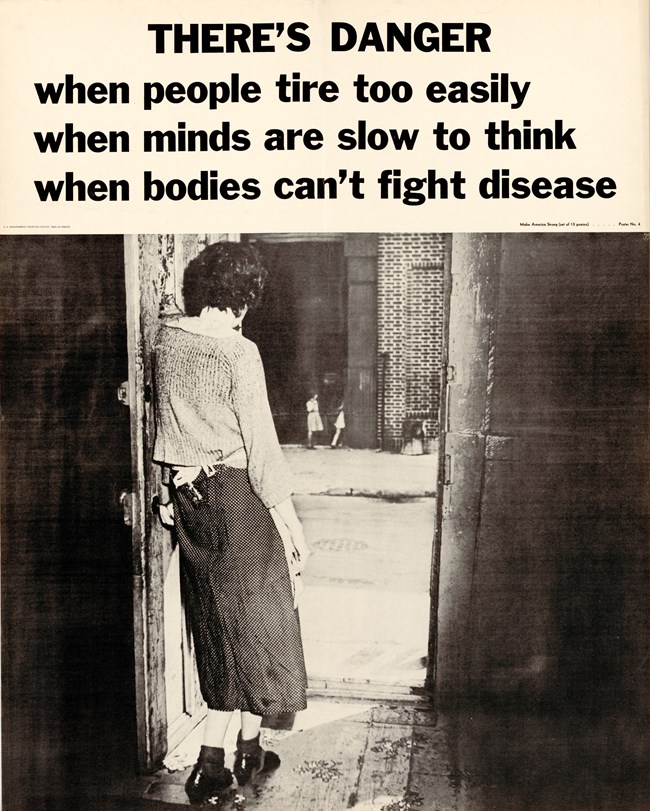
Collection of the National Archives and Records Administration (NAID: 514947).
Introduction
The science of nutrition that we take for granted today was in its infancy when World War II began. Before the 1930s, scientists knew that protein, energy, and minerals made up a nutritious diet. They also knew that some other things contributed, but they did not know what they were.
During the Great Depression, many across the United States suffered from hunger and malnutrition. A main concern was a widespread lack of B vitamins, resulting in a tired, nervous, and depressed population.
Scientists began investigating the specifics of what minerals and vitamins people needed to stay healthy. And they began recommending “protective foods” to prevent malnutrition. These included milk, leafy vegetables, eggs, fish, and organ meats.[1]
As World War II became increasingly inevitable, the US government was very worried about nutrition -- in the military and among civilians. Their concern was warranted – up to a quarter of draftees called up via the Selective Service Act of 1940 were malnourished and unfit to serve.[2]
World War II & Nutrition


Left image
“Are You On A Suicide Diet? You can stuff yourself with food… and still be committing dietary suicide! Surveys show that millions of Americans are not getting all the vitamins they need.” Detail of an ad for canned Florida citrus products, 1942.
Credit: Life Magazine, July 6, 1942, p. 74.
Right image
“Enriched Bread is Building A Healthier America.” To be enriched, bread & white flour had thiamin, niacin, riboflavin, and iron added. By the end of 1942, nearly 3/4 of US white bread was enriched.
Credit: Parran, Thomas (1944) “Introduction.” In NY State Food – In War and in Peace, Albany. pp. 157-158.
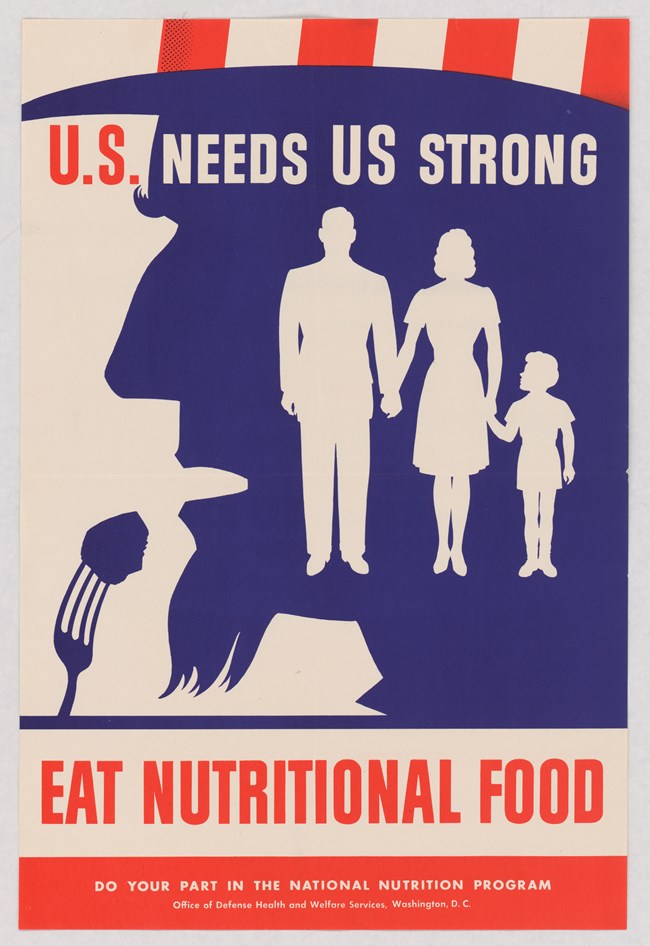
Collection of the National Archives and Records Administration (NAID: 515914).
The Food and Nutrition Board
Nutrition and food became linked with the future of America and of democracy itself.[3] In 1940, the National Research Council founded the Food and Nutrition Board (FNB) “to advise on nutrition problems in connection with National Defense.”[4] Their goal was to prepare a standard list of recommended nutrients that would make up a healthy diet.[5]
That same year, commercial bakeries volunteered to fortify bread. They replaced the B vitamins that disappeared when millers refined wheat into white flour. They also added other vitamins and minerals. In January of 1943, the government mandated enrichment of all white bread.[6]
In May 1941, 900 delegates of the National Nutrition Conference for Defense gathered at the Mayflower Hotel in Washington, DC. Doctors, home economists, dieticians, farmers, union leaders, and food industry professionals were there to discuss how to improve the nation's health.[7]
At the conference, the FNB presented a working draft of recommendations compiled from existing studies. And shortly afterwards, the federal government launched the National Nutrition Campaign. The slogan was the less-than-catchy “Eat Nutritional Food."
The “Basic 7”
In 1943, after two years of refinements, the FNB published the nation's first recommended daily dietary allowances. Included were recommendations for daily intake of calories, protein, calcium, iron, Vitamin A, Thiamine (B1), Riboflavin, Niacin, Ascorbic Acid (Vitamin C), and Vitamin D. They also suggested needed amounts of Vitamin K, iodine, and copper.[9]
Understanding that these numbers were not helpful on their own, the FNB provided an 8-part sample diet.[10] The sample diet was quickly simplified to the “Basic 7,” a precursor to our current food pyramid.[11]
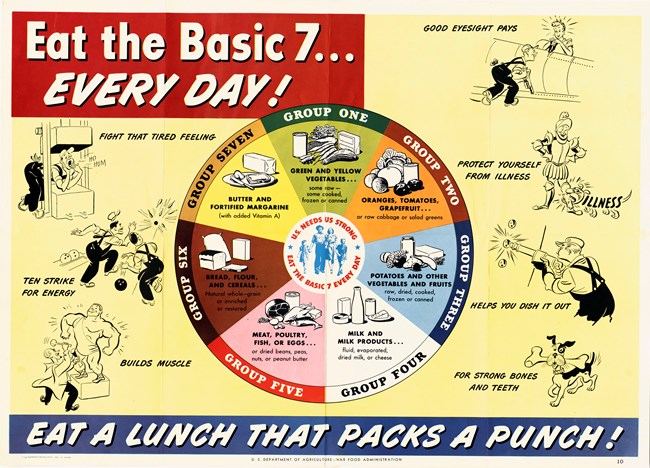
Collection of the National Archives and Records Administration (NAID: 514199).
The Basic 7 were:
-
Group One: Green and Yellow Vegetables: some raw, some cooked, frozen or canned;
-
Group Two: Oranges, Tomatoes, Grapefruit: or raw cabbage or salad greens;
-
Group Three: Potatoes and Other Vegetables and Fruit: raw, dried, cooked, frozen, or canned;
-
Group Four: Milk and Milk Products: fluid, evaporated, dried milk, or cheese;
-
Group Five: Meat, Poultry, Fish, or Eggs: or dried beans, peas, nuts, or peanut butter;
-
Group Six: Bread, Flour, and Cereals: natural whole-grain, or enriched, or restored;
-
Group Seven: Butter and Fortified Margarine (with added Vitamin A).
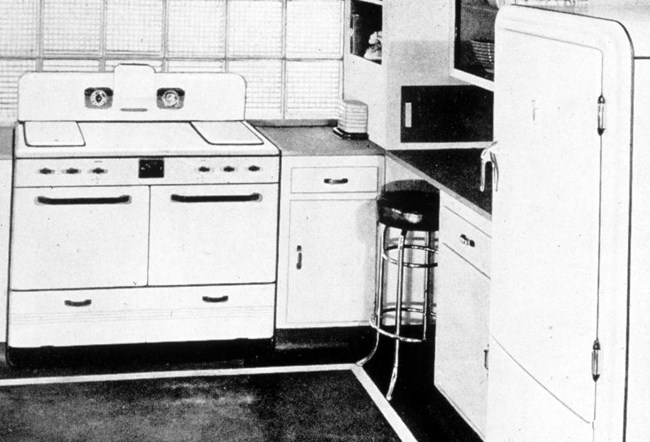
Collection of the University of Southern Indiana University Archives & Special Collections, Brad Awe Collection (MSS 184-0105).
Vita-Min-Go
In 1942, the Servel Company of Evansville, Indiana published the “Vita-Min-Go” game. Like other companies who dedicated their production capacity to the war effort, Servel didn't want the public to forget them. (Instead of their usual refrigerators, during World War II, they made wings for warplanes.) The Vita-Min-Go game was one way to stay relevant and support the war.
The game has a scoresheet listing several different kinds of foods. Every food has a point value for six vitamins and minerals, each represented by a different color. As players ate during the day, they tracked the points value for nutrients on a card of the same color. “Winning” the game each day meant getting at least 20 points on each of the six cards. “The prize for winning is better health and more vigor. The penalty for losing is greater chance of sickness.”
You can download and play the game yourself, thanks to the Oregon State Archives!
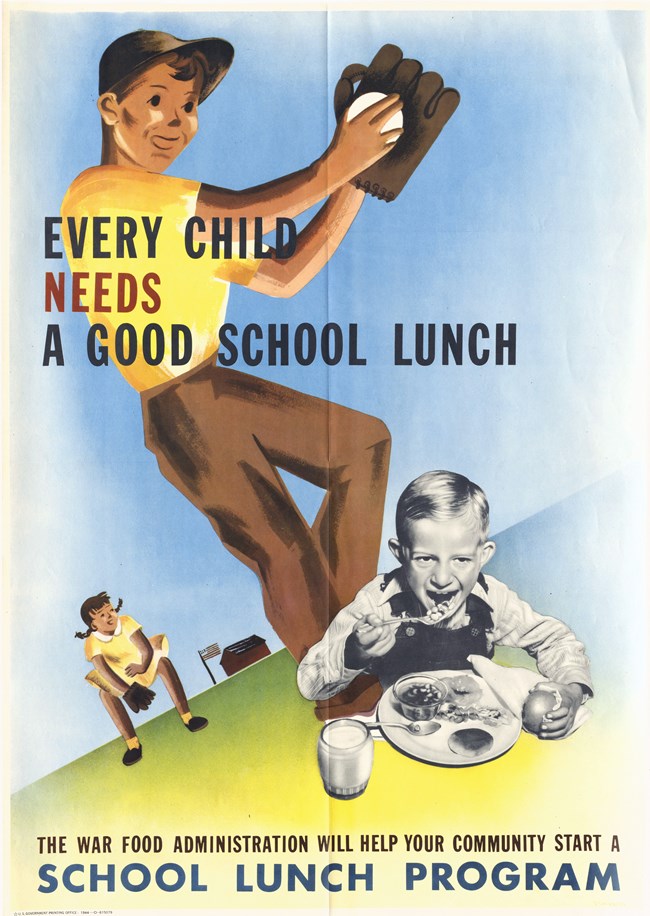
Collection of the National Archives and Records Administration (NAID: 514223).
School Lunches
Good nutrition was so important that there was a promotional program by the government, civic groups, and others. In 1942, the president created the Food Distribution Administration. It controlled the procurement, storage, and distribution of food to the military, allies, and civilians. Staff worked with the Office of Price Administration to set rationing guidelines and managed the school lunch program.[13]
Government-provided school lunches were first established during the Great Depression. They were among the New Deal programs managed by the Works Progress Administration. The program used surplus agricultural products to feed the overwhelming number of hungry children. It also was a vehicle for reducing unemployment, as schools hired lunchroom staff.[14] In 1942, the government estimated that over five million children (about one quarter of the nation’s total) received school lunches in over 78,850 schools.[15] By the end of the war, free and subsidized meals were being provided to over eight million children in an estimated 60,000 schools. Another million children took park in the “penny milk” program, providing a half pint of milk for one cent.[16]
In many cases, parents don’t have enough money to put the right kinds of food in their children’s lunch pails. In some cases – and this is increasingly true as more women go into war work – parents just don’t have the time to put up the right kind of lunch for their children. In other cases, parents aren’t well enough informed about nutrition to prepare an adequate lunch for their children.[17]
--United States War Food Administration and Office of Distribution, 1943
The school lunch program did more than feed children’s bodies. It also increased attendance, improved learning outcomes, and led to healthier children. This last was important due to a shortage of doctors in the US as they joined the military.
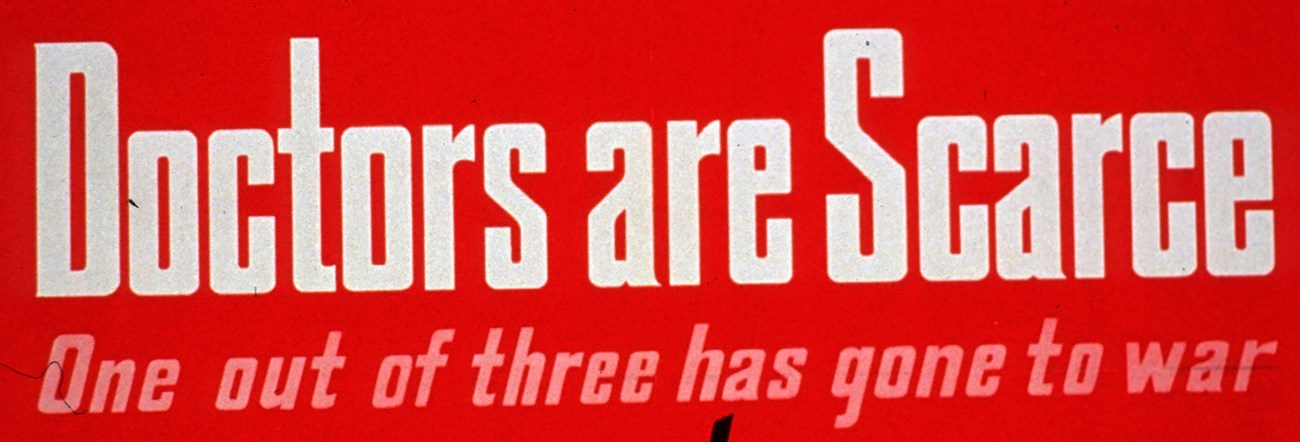
Collection of the National Library of Medicine (NLM ID: 101450630).
Challenges and Shortcomings
The nutrition programs of World War II were not without their problems. Despite an all-out educational campaign, less than half the population was eating to the Basic 7. Only 7% reported getting their full daily allowances.[19] The risk to the war effort was bigger than just those who were not eating well. Undernourished people are more likely to get sick than those who are well-fed. Because of wartime pressures (and policies), employers and the government strongly discouraged taking time off. People who were sick, therefore, brought their illnesses to work, where they spread to their coworkers. The result was losses in war production.[20]
Part of the problem in meeting the Basic 7 was the cost. Americans in general were making good wages doing wartime work, but the increase in income wasn’t uniform. One estimate pegged the National Nutrition Program as too expensive for 20-50% of Americans.[21]
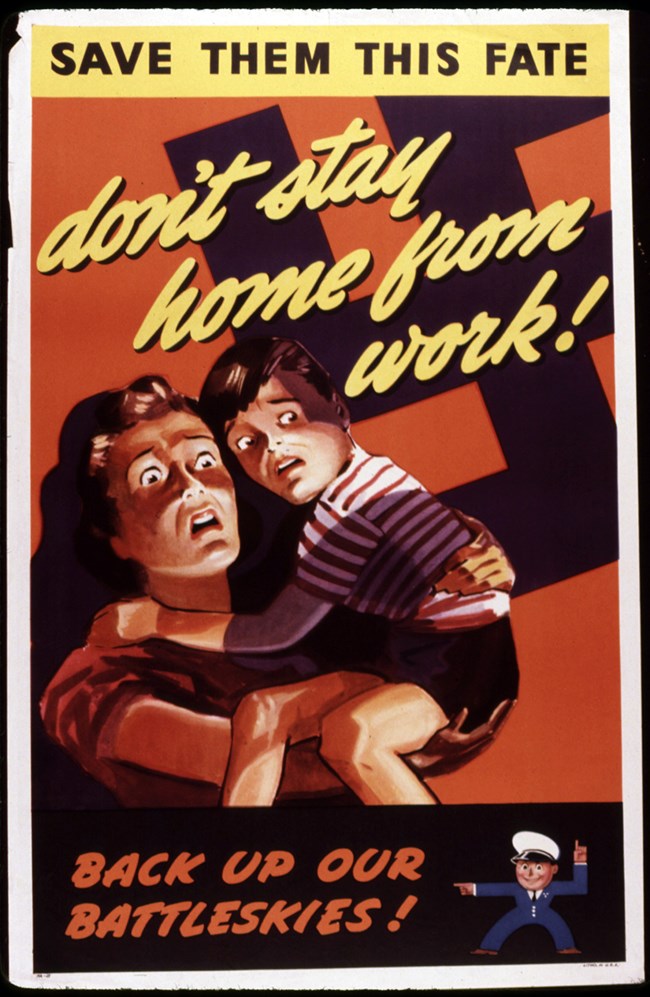
Collection of the National Archives and Records Administration (NAID: 534711).
There were other issues as well. The Basic 7 did not include regional foods or cultural preferences in its recommendations. Those who developed it built it around European and New England diets of white bread, butter, potatoes, cow’s milk, and refined white sugar.[22] This was not by accident; after the Civil War, food – specifically food familiar to New Englanders – was marketed as “American.” The idea was to bring the country together around a common identity -- one that was purposefully white and middle class. By excluding African American, Asian American, Latino American, and Native American foodways, these groups were marked as "other." Those who did follow the recommendations, and moved away from their traditional foods and ways of eating, were perceived to be more American.[23]
The issue was not just cultural, but also biological. The nutritionists of World War II emphasized milk as a “perfect food.” But there are many people whose ancestors did not raise dairy cows, and so they tend to be lactose intolerant. This includes many people of African and Asian descent, as well as Native Americans, Alaska Natives, Pacific Islanders, and Native Hawaiians.[24] The New England-based foods that made up the Basic 7 recommendations also ignored that different foods grow in different areas. This steered people away from local, seasonal foods and towards imported and preserved foods.
Despite the pressure to conform, there were those who pushed back. Filipina food chemist Maria Orosa was one of them. After training in food science in the United States she returned to the Philippines. There, she developed recipes using local foods and trained others how to grow and cook them. Her goal was to free Filipinos from their reliance on preserved and imported foods.
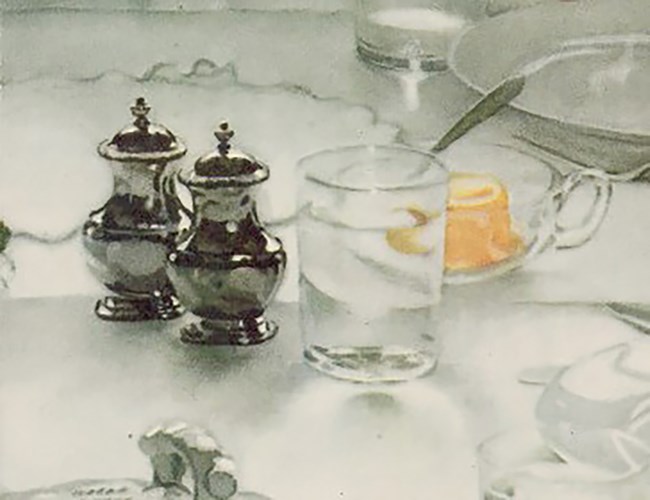
Collection of University of North Texas Libraries, Government Documents (ark:/67531/metadc555).
Did You Know?
In 1945, the FNB published a revised set of suggested daily requirements that included suggestions for how much water a person needs each day.[25] This is the source of the idea that we should drink 8 glasses of water a day. In the report, the FNB gave equations for how much water a person needed based on how much energy they used. For someone using 2,000 calories a day, the suggestion for water intake was 64oz. This was widely interpreted as eight x 8oz glasses of water.[26]
But that’s not what the study said. In fact, the study said that “A suitable allowance of water for adults is 2.5 liters [about 85oz] daily in most instances.…Most of this quantity is contained in prepared foods.” In other words, the foods we eat contain most of the water we need each day. When we need more water – when working hard or on hot days – we can, according to the study, generally rely on our sense of thirst.[27]
This article was written by Megan E. Springate, Assistant Research Professor, Department of Anthropology, University of Maryland, for the NPS Cultural Resources Office of Interpretation and Education. It was funded by the National Council on Public History.
[1] Desmond 1944: 160; Harper 2003: 3698.
[2] Wassburg Johnson 2022.
[3] LeBlanc 2019: 1.
[4] Food and Nutrition Board 1943: 164; Parran 1944: 157. At the time he wrote this, Thomas Parran was the Surgeon General of the United States.
[5] Staats 1978: 2.
[6] Desmond 1944: 160-161; Parran 1944: 157.
[7] LeBlanc 2019: 13. The Mayflower Hotel located at 1127 Connecticut Avenue NW, Washington, DC was listed on the National Register of Historic Places on November 14, 1983.
[8] Harper 2003: 3701; Harris 1944: 76; LeBlanc 2019: 31-32; Staats 1978: 2; Wilson 1944: 55-57. Much of this early work was heavily informed by the work of Drs. Hazel Stiebeling and Esther Phipard at the United States Department of Agriculture. During the Depression, they had been working on nutritionally adequate meals specifically designed for low income families (Harper 2003: 3699).
[9] Food and Nutrition Board 1943: 165.
[10] Food and Nutrition Board 1943: 167.
[11] Wassberg Johnson 2019; Wilson 1944: 58.
[12] Servel, Inc. 1942. “Vita-Min-Go”
[13] National Archives and Records Administration n.d.; Wassberg Johnson 2022.
[14] Levine 2008: 45-50.
[15] Levine 2008: 47.
[16] Levine 2008: 53.
[17] United States War Food Administration and Office of Distribution 1943.
[18] Wassberg Johnson 2022.
[19] Harris 1944: 76-77.
[20] Harvey 1944: 111.
[21] Harris 1944: 79; Harvey 1944: 111.
[22] Wassberg Johnson 2023. This is also the source of the idea of a proper meal consisting of “a meat and three” (a starch and two vegetables).
[23] Bentley 1996: 131; Wassberg Johnson 2023.
[24] Wassberg Johnson 2023.
[25] Food and Nutrition Board 1945.
[26] Stookey and Kavouras 2020: 3359.
[27] Food and Nutrition Board 1945: 11.
Bentley, Amy (1996) “Islands of Serenity: Gender, Race, and Ordered Meals During World War II.” Food and Foodways 6(2): 131-156.
Desmond, Thomas C. (1944) “Bread – Your New ‘Perfect Food.’” In New York State Legislative Committee on Nutrition (ed.) Food – in War and in Peace. New York State Joint Legislative Committee on Nutrition, Albany, pp. 159-163.
Food and Nutrition Board, National Research Council (1945) “Notes: Recommended Dietary Allowances, Revised 1945.” Nutrition Reviews 3(9): 287-288.
--- (1943) “Recommended Dietary Allowances.” Nutrition Reviews 1(6): 164-168.
Harper, Alfred E. (2003) “Contributions of Women Scientists in the U.S. to the Development of Recommended Dietary Allowances.” The Journal of Nutrition, 133(11): 3698-3702.
Harris, Robert S. (1944) “Reexamining Our National Nutrition Program.” In New York State Legislative Committee on Nutrition (ed.) Food – in War and in Peace. New York State Joint Legislative Committee on Nutrition, Albany, pp. 76-87.
Harvey, Ray F. (1944) “Inflation and Nutrition.” In New York State Legislative Committee on Nutrition (ed.) Food – in War and in Peace. New York State Joint Legislative Committee on Nutrition, Albany, pp. 107-113.
LeBlanc, Hannah F. (2019) “Nutrition for National Defense: American Food Science in World War II and the Cold War.” PhD dissertation, Department of History, Stanford University, CA.
Levine, Susan (2008) School Lunch Politics: The Surprising History of America’s Favorite Welfare Program. Princeton University Press, NJ.
National Archives and Records Administration (n.d.) “Department of Agriculture. Food Distribution Administration. 12/5/1942-3/26/1943.” National Archives and Records Administration.
Parran, Thomas (1944) “Introduction.” In New York State Legislative Committee on Nutrition (ed.) Food – in War and in Peace. New York State Joint Legislative Committee on Nutrition, Albany, pp. 157-158.
Servel, Inc. (1942) “Vita-Min-Go” (game). Life on the Home Front Web Exhibit (Oregon State Archives), “Food is a Weapon: Nutrition Programs Fight for Victory.” Oregon State Archives, Defense Council Records, Box 30, Folder 14.
Staats, Elmer P. (1978) “Recommended Dietary Allowances: More Research and Better Food Guides Needed.” Report to Rep. James H. Scheuer, Chairman, House Committee on Science and Technology, November 30, 1978.
Stookey, Jodi D. and Stavros A. Kavouras (2020) “Water Researchers Do Not Have a Strategic Plan for Gathering Evidence to Inform Water Intake Recommendations to Prevent Chronic Disease.” Nutrients 12(11): 3359.
United States War Food Administration and Office of Distribution (1943) “Hunger Quits School” (pamphlet). United States Food Administration and Office of Distribution.
Wassberg Johnson, Sarah (2023) “Are Nutrition Science and Nutritional Guidelines Racist?” Food History Blog, March 24, 2023.
--- (2022) “World War Wednesday: Hunger Quits School.” Food History Blog, September 28, 2022.
--- (2019) “World War Wednesdays: The Basic Seven.” Food History Blog, September 18, 2019.
Wilson, M.L. (1944) “National Wartime Nutrition Program.” The Journal of School Health 14(3): 53-55.
Table of Contents
1. Introduction
2. The American Home Front Before World War II
3. The American Home Front and the Buildup to World War II
3B The Selective Service Act and the Arsenal of Democracy
4. The American Home Front During World War II
4A A Date That Will Live in Infamy
4A(i) Maria Ylagan Orosa
4C Incarceration and Martial Law
4D Rationing, Recycling, and Victory Gardens
4D(i) Restrictions and Rationing on the World War II Home Front
4D(ii) Food Rationing on the World War II Home Front
4D(ii)(a) Nutrition on the Home Front in World War II
4D(ii)(b) Coffee Rationing on the World War II Home Front
4D(ii)(c) Meat Rationing on the World War II Home Front
4D(ii)(d) Sugar: The First and Last Food Rationed on the World War II Home Front
4D(iii) Rationing of Non-Food Items on the World War II Home Front
4D(iv) Home Front Illicit Trade and Black Markets in World War II
4D(v) Material Drives on the World War II Home Front
4D(v)(a) Uncle Sam Needs to Borrow Your… Dog?
4D(vi) Victory Gardens on the World War II Home Front
4D(vi)(a) Canning and Food Preservation on the World War II Home Front
4E The Economy
4E(i) Currency on the World War II Home Front
4E(ii) The Servel Company in World War II & the History of Refrigeration
5. The American Home Front After World War II
5A The End of the War and Its Legacies
5A(i) Post World War II Food
More From This Series
-
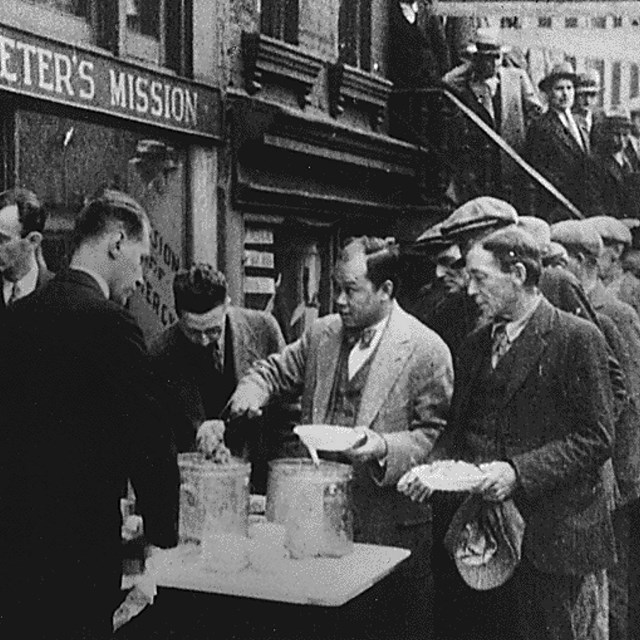 The Home Front Before World War IIWWI, Great Depression, and the New Deal
The Home Front Before World War IIWWI, Great Depression, and the New DealCircumstances leading up and during World War I, the Great Depression and the New Deal all shaped the US World War II home front.
-
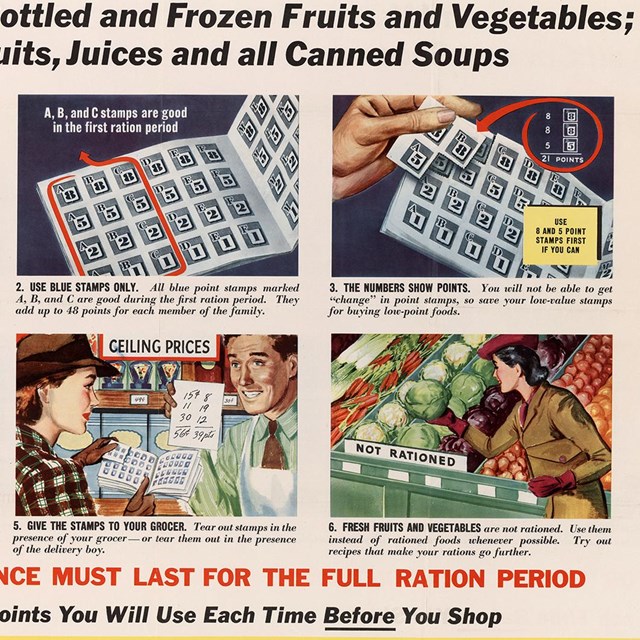 The Home Front During World War IIFood Rationing
The Home Front During World War IIFood RationingThe military's need for food and packaging, limited shipments from overseas, and agricultural laborers going to war meant food was rationed.
-
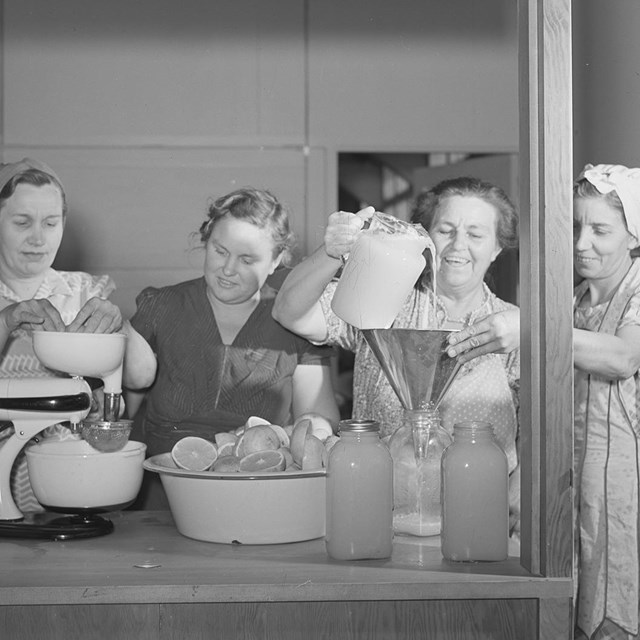 The Home Front During World War IICanning and Food Preservation
The Home Front During World War IICanning and Food PreservationPlanting Victory Gardens was only part of the work. Efficiently and safely preserving that bounty for later use was crucial.
Tags
- world war ii
- wwii
- world war 2
- wwii home front
- wwii homefront
- african american history
- latino american history
- asian american and pacific islander history
- indigenous history
- native american history
- native hawaiian
- alaska native history
- native hawaiian history
- alaska native
- history of science
- science and technology
- history of food
- foodways
- government history
- military history
- children
- great depression
- national register of historic paces
- washington dc
- philippines
- indiana
- awwiihc
- wwii aah
- american world war ii heritage city program
- women's history
- evansville
- history of medicine
- military and wartime history

